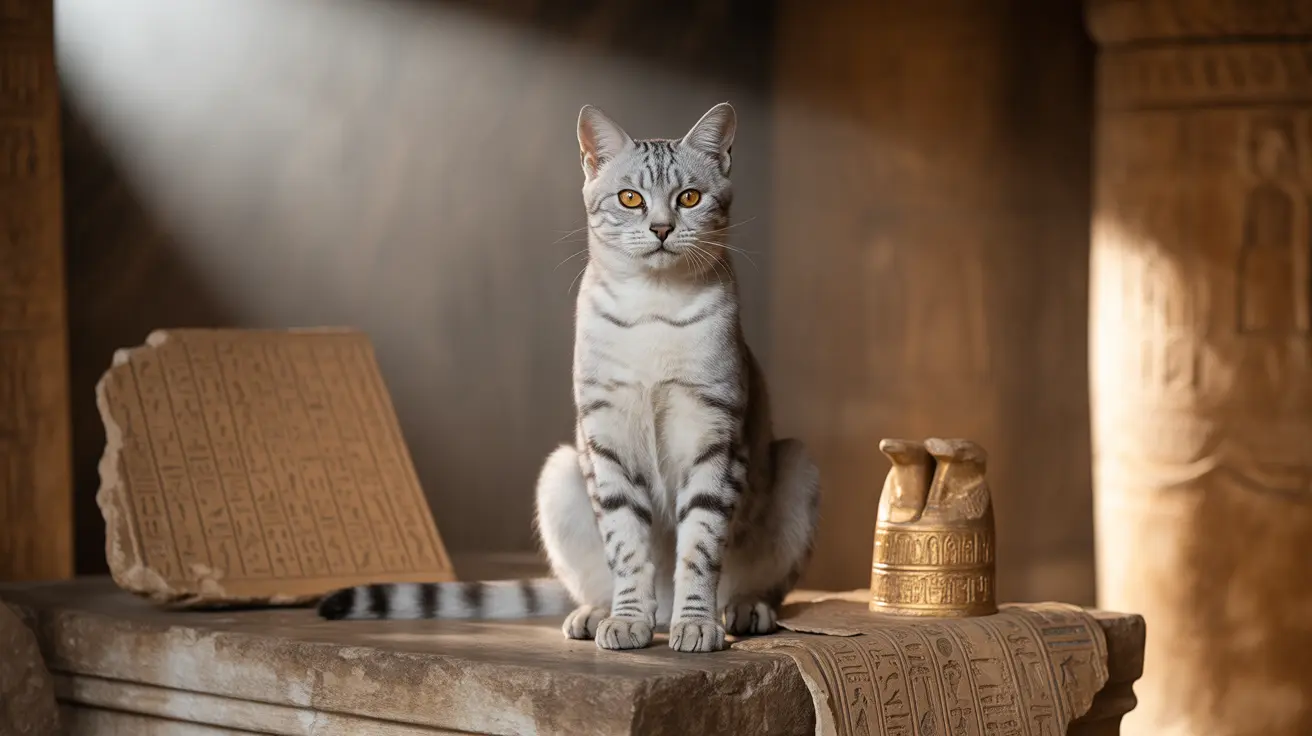The Historical Mystery of Cleopatra's Cats
Despite popular modern depictions, there's no concrete historical evidence that Cleopatra VII personally owned a cat. However, given the paramount importance of cats in ancient Egyptian culture, it's highly likely that cats were present in her royal household. Some legends suggest she owned an Egyptian Mau named Tivali, though this claim lacks historical documentation.
During Cleopatra's era, the most common cats were likely jungle cats (Felis chaus) and African wildcats (Felis silvestris lybica), the ancestors of our modern domestic cats. These animals would have been found throughout the royal palaces and temples of ancient Egypt.
Sacred Status of Cats in Ancient Egypt
In Cleopatra's time, cats held an elevated status that went far beyond mere pets. They were considered divine creatures, closely associated with the goddess Bastet, who represented protection, fertility, and domestic harmony. The killing of a cat, even accidentally, could result in severe punishment, including death.
Cats were so revered that they were often mummified and buried with elaborate ceremonies, sometimes alongside their wealthy owners. Archaeological discoveries have revealed countless cat mummies, complete with jewelry and offerings, highlighting their spiritual significance.
The Legacy of Ancient Egyptian Cats Today
The Egyptian Mau breed, considered by many to be the modern embodiment of ancient Egyptian cats, carries forward the legacy of Cleopatra's era. These elegant felines share many physical characteristics with the cats depicted in ancient Egyptian art, including their distinctive spotted coats and graceful bearing.
Modern cat breeds like the Abyssinian and even the hairless Sphynx claim connections to ancient Egypt, though these links are more romantic than historically accurate. The term "Kleopatra kedisi" continues to evoke images of regal, mysterious felines with direct lineage to the cats of ancient Egypt.
Cultural Impact and Modern Interpretations
The association between Cleopatra and cats has captured the imagination of artists, writers, and cat enthusiasts for centuries. This connection has influenced everything from literature and art to modern cat breeding and marketing. The image of Cleopatra with her cats has become a powerful symbol of feminine grace, power, and mystery.
Frequently Asked Questions
Did Cleopatra actually own a cat, and if so, what breed might it have been?
While there's no definitive historical proof that Cleopatra owned a cat, if she did, it would most likely have been either a jungle cat (Felis chaus) or an African wildcat (Felis silvestris lybica), as these were the predominant species in ancient Egypt during her reign.
What makes the Egyptian Mau breed special and connected to ancient Egypt's cat history?
The Egyptian Mau is notable for its naturally spotted coat and physical similarities to cats depicted in ancient Egyptian art. They are considered one of the few naturally spotted breeds of domestic cats and share many characteristics with their ancient ancestors.
How were cats regarded and protected in ancient Egyptian society during Cleopatra's time?
Cats were considered sacred animals, protected by strict laws. Harming or killing a cat was a serious crime that could result in severe punishment. They were associated with the goddess Bastet and were often mummified after death.
What are the key physical and personality traits of the Egyptian Mau cat today?
Egyptian Maus are medium-sized cats with distinctive spotted coats, athletic builds, and graceful movements. They are known for their intelligence, loyalty, and playful nature, combining the elegance of their ancient ancestors with the affectionate nature of modern domestic cats.
How can pet owners best care for and maintain an Egyptian Mau cat's health and happiness?
Egyptian Maus thrive with regular exercise, mental stimulation, and social interaction. They benefit from a high-quality diet, regular veterinary care, and plenty of opportunities to climb and explore. These active cats need both physical activity and emotional engagement to stay healthy and content.






